
| Publisher: | Harper Design | |
| Genre: | Performing Arts, General, Social Science, Television, Popular Culture | |
| ISBN: | 9780062280633 | |
| Pub Date: | October 2013 | |
| Price: | $45 |
| Science Fiction & Fantasy |
by Marcus Hearn
Marcus Hearn's comprehensive Doctor Who: The Vault collects 50 years of ephemera, facts and images from the BBC's science fiction series in a gorgeously pleasing volume. The book itself is a tactile delight, with a cushioned cover and thick, glossy pages that show off the huge amount of media contained within. After a sparkling foreword by current executive producer Steven Moffat, Hearn springs right into the thick of things, showcasing a variety of pictures and a surprising amount of information about the Doctor's adventures during the many years the series has been on the air.
Fans of the series, and anyone else interested in a behind-the-scenes look at this one-of-a-kind cultural phenomenon, will sprint through Doctor Who: The Vault at high speed, fated to return again and again like time travelers to Hearn's densely packed and finely laid-out visual feast. --Rob LeFebvre, freelance writer and editor
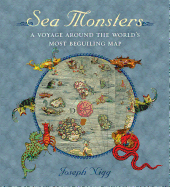
| Publisher: | University of Chicago Press | |
| Genre: | Scandinavia, History, Earth Sciences, Renaissance, Reference, Atlases, Gazetteers & Maps, Europe, Geography, Science | |
| ISBN: | 9780226925165 | |
| Pub Date: | August 2013 | |
| Price: | $40 |
| Starred | History |
by Joseph Nigg
In Sea Monsters, Joseph Nigg (How to Raise and Keep a Dragon) takes the reader on a guided tour through Olaus Magnus's 16th-century map of Northern Europe and its accompanying book of commentary. Nigg charts a course through the waters of this cartographic masterpiece and its cryptozoological inhabitants, sailing north from the southwest coast of Norway past the ray-like rockas, giant lobsters, beached whales, and sea serpents, to the greatest of all sea monsters--the Kraken.
Nigg provides Magnus's own descriptions of each beast, then discusses its place in traditional monster lore and legacy in later maps and natural histories. It's easy for a map-loving reader to follow along, especially since the book jacket unfolds into a copy of Magnus's map.
Sea Monsters is a lavishly illustrated combination of whimsy and scholarship that should appeal to fans of maps, monsters and high fantasy. --Pamela Toler, blogging at History in the Margins
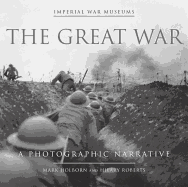
| Publisher: | Knopf | |
| Genre: | History, Pictorial, Military, World War I | |
| ISBN: | 9780385350709 | |
| Pub Date: | October 2013 | |
| Price: | $100 |
| History |
by Mark Holborn, Hilary Roberts
Mark Holborn and Hilary Robert's The Great War marks next year's centennial of the beginning of World War I with a chronological account ranging from the initial nationalistic fervor as countries mobilized to the increasingly brutal atrocities and savagery soldiers faced in the trenches (including the effects of chemical warfare). Colorful images of the war's trophies and memorabilia are juxtaposed against the haunting ruins of historic buildings and skeletal remains poking out of makeshift graves against a stone gray sky.
These photos, amassed from the personal collections of individual soldiers, journalists and historical archives, tell a compelling story, one that would come to define future generations. --Nancy Powell, freelance writer and technical consultant

| Publisher: | Abrams | |
| Genre: | United States, Football, General, Sports & Recreation, History, Subjects & Themes, Sports, Photography | |
| ISBN: | 9780810997622 | |
| Pub Date: | October 2013 | |
| Price: | $30 |
| Sports |
by Susan Reyburn
With the aid of awe-inspiring images from the Library of Congress, Susan Reyburn (Baseball Americana) masterfully recounts a detailed history of the gridiron in Football Nation. From colonial times to the commercialism of contemporary professional and college ball, Reyburn offers a look at football's journey toward becoming the most popular sport in the country.
With previously unreleased images, including cartoons, illustrations and photographs, Reyburn traces the historical relationship between the United States and the game. Fans will gain a deeper understanding and appreciation for the sport, but even casual followers of the game will be enthralled with an unprecedented depth of perspective on this glamorized spectacle in history and in popular culture. Football Nation is an appealing read for anyone remotely interested in what many call the United States' most popular sport--and how it got that way. --Julia Jenkins, librarian and blogger at pagesofjulia, with Jesse Brackeen, blogger at All Things 713 and The Sports Quotient

| Publisher: | Andrews McMeel | |
| Genre: | General, House & Home, Interior Decorating, Decorating, Design | |
| ISBN: | 9781449421649 | |
| Pub Date: | October 2013 | |
| Price: | $29.99 |
| House & Home |
by Mary Carol Garrity
In 1981, Mary Carol Garrity opened a small decorating store in her hometown of Atchison, Kan., and named it Nell Hill's, after her maternal grandmother. More than 20 years later, the store is a fixture in the decorating world, dubbed one of the country's "hottest little retailers" by Forbes. In Nell Hill's Rooms We Love, Garrity brings her decorating and lifestyle advice to a larger audience.
Rooms We Love draws inspiration from the homes of four Nell Hill's customers, as well as Garrity's own home, with photographs of key rooms in each house. Garrity walks readers through the process of making a room functional, colorful, energetic and comfortable. From bringing the outdoors in to selecting the right throw pillow, her advice is tailored toward helping readers find their own sense of style. With full-color photographs on every page, it's hard not to be inspired by Garrity's work. --Kerry McHugh, blogger at Entomology of a Bookworm
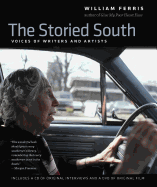
| Publisher: | University of North Carolina Press | |
| Genre: | Literary Criticism, Criticism & Theory, Art, General, American | |
| ISBN: | 9781469607542 | |
| Pub Date: | August 2013 | |
| Price: | $35 |
| Reference & Writing |
by William Ferris
In a 40-year labor of love and scholarship, historian William Ferris's The Storied South vividly portrays 26 writers, scholars, musicians, painters, and photographers as they discuss the sense of place and the power of story in their lives, exploring questions about the meaning of art, race, region and history. Eudora Welty, Alice Walker, Cleanth Brooks, Pete Seeger and Walker Evans, among others, recount the sacred love of writing and reading instilled in Southern children at a very young age, while blues musician Bobby Rush suggests that story provides the common ground on which two disparate professions stand: preacher and bluesman. Ferris's moving and eloquent book comes with a CD and DVD of his interviews with these storytellers, as well as his photos of each artist. --Valerie Ryan, Cannon Beach Book Company, Ore.
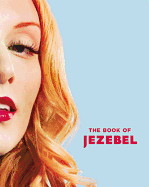
| Publisher: | Grand Central | |
| Genre: | General, Women's Studies, Social Science, Popular Culture | |
| ISBN: | 9781455502806 | |
| Pub Date: | October 2013 | |
| Price: | $27 |
| Reference & Writing |
by Anna Holmes, editor
The Book of Jezebel, edited by the creator of the popular feminist website with contributions from many of its writers, is an illustrated encyclopedia of "lady things." The Jezebel definition of lady things includes body parts, clothing, historical and contemporary women in pop culture, literature and politics--and women's issues related to feminism, reproductive rights and relationships. It also contains an "ode to female friendship," (mostly) humorous attacks on certain public figures and plenty of photographs and illustrations that add to the book's informational value and its hilarity.
Although often funny, The Book of Jezebel is serious in its underlying intent, aspiring to balance empowerment with femininity. It's not just for women, but for men who love them as well. --Julia Jenkins, librarian and blogger at pagesofjulia
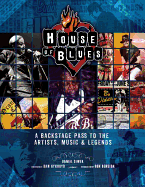
| Publisher: | Insight Editions | |
| Genre: | Blues, Music, Genres & Styles | |
| ISBN: | 9781608872534 | |
| Pub Date: | October 2013 | |
| Price: | $45 |
| Performing Arts |
by Daniel Siwek
Music journalist and hard-core House of Blues fan Daniel Siwek has created a monster--in a good way. The oversized House of Blues is stuffed with gorgeous color photos and inserted memorabilia (replicas of tickets, backstage passes, posters and so forth), weighing in at four pounds. As Dan Ackroyd, one of the restaurant and concert venue's co-founders, writes in his foreword, this book is "a record of a concept that commands stimulation for all the senses."
The first House of Blues opened in 1992 in Cambridge, Mass., serving up great blues and Southern food and culture; there are now 13 of them across the country. Siwek's tribute is chock-full of interviews with the founders and musicians, but the photos alone are worth the price of admission--like the beautiful two-page, full-color stunning spreads of B.B. King performing with his band or a sweaty James Brown singing it out. Awesome. --Tom Lavoie, former publisher
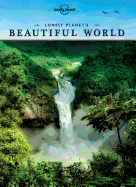
| Publisher: | Lonely Planet | |
| Genre: | Travel, Pictorials | |
| ISBN: | 9781743217177 | |
| Pub Date: | November 2013 | |
| Price: | $39.99 |
| Starred | Art & Photography |
by Lonely Planet
Lonely Planet, best known for travel guidebooks, has compiled a collection of spectacular photographs from around the globe in Lonely Planet's Beautiful World. "Being in a beautiful place is more than observing what's before your eyes," the preface reflects. The context of an image is what evokes emotion; thus, the images Beautiful World are divided among 10 "aspects of life."
Whether a peaceful waterfall in Iceland or a raging supercell storm in the United States, a sense of awe and wonderment is present. A rush of migrating buffalo, a raging rapid, an erupting volcano: all simultaneously breathtaking and dangerous.
The photos' captions indicate their locations and are supplemented with further explanation and photographer credits in the index. This visual travel guide from Lonely Planet will take readers on an exotic trip around the beautiful world. --Jen Forbus of Jen's Book Thoughts

| Publisher: | Yale University Press | |
| Genre: | Art, Graffiti & Street Art, Reference | |
| ISBN: | 9780300199420 | |
| Pub Date: | September 2013 | |
| Price: | $35 |
| Art & Photography |
by Rafael Schacter
Born of outlaw populism, street art and graffiti arose after hours in alleys, abandoned buildings and desolate transit stations--often signed with the artist's stylized "tag." Almost a century after Diego Rivera painted his great Mexican murals, though, street art has become mainstream. Rafael Schacter, anthropologist and curator of several public art exhibitions, spent a decade researching the contemporary network of established but still iconoclastic artists working the streets of major urban centers. The World Atlas of Street Art and Graffiti showcases more than 100 artists in 16 cities whose work is as varied as the colorful cross-hatched murals of Sao Paulo's Nunca and the bold wall paintings of Barcelona's Aryz. The more than 700 dramatic color illustrations are buttressed by slightly cockeyed world map inkblot endpapers by the Helsinki artist Egs. Street art and graffiti may have gone coffee table, but that doesn't diminish their impressive power. --Bruce Jacobs, founding partner, Watermark Books & Cafe, Wichita, Kan.
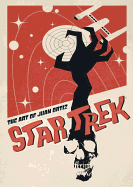
| Publisher: | Titan Books | |
| Genre: | Performing Arts, Art, General, Popular Culture, Reference, Film & Video | |
| ISBN: | 9781781166703 | |
| Pub Date: | September 2013 | |
| Price: | $39.95 |
| Art & Photography |
by Juan Oritz
What happens when a former Disney illustrator and comic book artist catches the Star Trek bug? Star Trek: The Art of Juan Ortiz is an attempt to capture the themes of war, love, horror, death, politics and social issues popularized on the small screen by Gene Roddenberry. What started as a side project to inspire Ortiz's creative juices turned into an unusual representation of cinematic art: he designed a retro-cool poster for every episode of the original series, as if it were its own movie.
Colorful whimsy reflects the lighthearted silliness of "The Trouble with Tribbles," while a miniature Enterprise floating through within the cosmos of Edith Keeler's bouffant forebodes the impending loss in "The City of the Edge of Forever." The dreaminess of Ortiz's artistic tribute should delight diehard Trekkers. --Nancy Powell, freelance writer and technical consultant
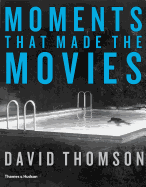
| Publisher: | Thames & Hudson | |
| Genre: | Performing Arts, Film & Video, History & Criticism | |
| ISBN: | 9780500516416 | |
| Pub Date: | October 2013 | |
| Price: | $39.95 |
| Art & Photography |
by David Thomson
David Thomson (The Biographical Dictionary of Film) has come up with another book of film lists. Moments That Made the Movies doesn't focus on the best or the greatest, though, but on "moments that have stayed in my memory," be they a few seconds or an entire scene, culled from 70 films stretching over more than a century of cinematic history.
Some of Thomson's choices are unsurprising, like the final scene in The Searchers or Cary Grant chased by the plane in North by Northwest. Psycho is represented here, but it's the scene with Norman and Marion having supper at the motel, "maybe the best conversation in all of Hitchcock." Other, less expected choices include Jimmy Stewart holding up panties in Anatomy of a Murder or Dean Stockwell lip-synching to Roy Orbison in Blue Velvet. These, along with Thomson's other moments, are captured in a few pages each, with 250 glorious stills accompanying the brief analyses. --Tom Lavoie, former publisher
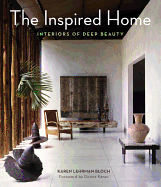
| Publisher: | Harper Design | |
| Genre: | Architectural & Industrial, General, House & Home, Interior Decorating, Architecture, Decorating, Photography, Interior Design, Design | |
| ISBN: | 9780062126856 | |
| Pub Date: | September 2013 | |
| Price: | $35 |
| Art & Photography |
by Karen Lehrman Bloch
Karen Lehrman Bloch's The Inspired Home gives readers glimpses inside the homes of designers like Donna Karan (who also provides a foreword), artists and other creative types. Bloch's "interiors of deep beauty" are divided among five categories--authenticity, simplicity, balance, surprise and grandeur--guiding readers on how to achieve an esthetically pleasing home that nurtures and comforts rather than resembles a museum. Some of her advice is obvious ("too much busyness... can feel as chaotic as it looks") and her focus is strictly on high-end people who can afford gold-leaf furniture and multiple houses. Much of the interior design is breathtaking, so even if the average person can't attain exactly the same results, The Inspired Home can still provide good ideas for those looking to make changes in their domestic circumstances. --Elyse Dinh-McCrillis, writer/editor blogging at Pop Culture Nerd
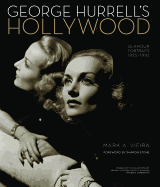
| Publisher: | Running Press | |
| Genre: | Celebrity, Performing Arts, Individual Photographers, General, Subjects & Themes, Film & Video, Photography | |
| ISBN: | 9780762450398 | |
| Pub Date: | November 2013 | |
| Price: | $60 |
| Art & Photography |
by Mark A. Vieira
"George Hurrell was a master of light, elegance, and glamour," writes Sharon Stone in the foreword to the hefty, visually stunning George Hurrell's Hollywood. A former painter, Hurrell transformed the look of Hollywood portraiture with his photographs of hundreds of movie stars, including Greta Garbo, Clark Gable and Joan Crawford.
Stunning portraits, many of them full-page, appear beside Mark A. Vieira's exploration of Hurrell's life and career (expanded and updated from his original 1997 study). Vieira traces Hurrell's artistic development, his relationships with stars and movie studios and the scandals that later rocked his marriage and his career. To everyone's surprise, Hurrell eventually enjoyed a renaissance as his prints became collectors' items. Like the stars he photographed, Hurrell could be moody and difficult to work with, but his images--not only beautiful, but iconic--ensured his status as a Hollywood legend. --Katie Noah Gibson, blogger at Cakes, Tea and Dreams

| Publisher: | National Geographic Society | |
| Genre: | Collections, Catalogs, Exhibitions, General, Photojournalism, Subjects & Themes, Landscapes, Photography | |
| ISBN: | 9781426211799 | |
| Pub Date: | October 2013 | |
| Price: | $40 |
| Art & Photography |
by National Geographic
"Photography is always about the light," Maura Mulvihill writes, "no matter the subject." National Geographic's Dawn to Dark Photographs pays homage to that sentiment with a collection of stunning photographs from around the world.
The parts of the day function as the book's eight divisions; a short introduction to each section, as well as picture captions, sporadic quotes and occasional explanations from the photographers, enrich an explosive sensory experience. The brilliant images reflect light's touch on life. Through the lens of their cameras, photographers capture the beauty of nature, the awe-inspiring wonder of cultures and the crossroads where they meet.
Colors and textures are sharply reproduced, emphasizing the photographs' atmospheres. From a raging fire in North America to a political rally in North Africa to a camel beauty contest in the Middle East, this collection will be coveted by photography lovers and will make a great addition to anyone's coffee table. --Jen Forbus of Jen's Book Thoughts
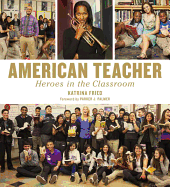
| Publisher: | Welcome Books | |
| Genre: | Education, Philosophy & Social Aspects, Essays, Subjects & Themes, Portraits, Photography | |
| ISBN: | 9781599621272 | |
| Pub Date: | September 2013 | |
| Price: | $45 |
| Art & Photography |
by Katrina Fried
In American Teacher: Heroes in the Classroom, Katrina Fried's subjects inspire optimism for the future. Her homage to 50 classroom mentors is an appropriately weighty volume, featuring interviews, stories and full-page photos of educators and their students. All teach in public or charter public schools, and their classroom experience ranges from two to 52 years. Some came from privilege, others from poverty; all are committed to teaching. From the "Rappin' Mathematician" of Escondido, Calif., to the multimedia teacher in South Burlington, Vt., they can all boast of highly successful students. Most have won formal recognition, from "Teacher of the Year" in their districts or states, to a Presidential Award for Excellence and the National Medal for the Arts.
You'll want to give a favorite teacher this book--and you'll wish you could enroll in one of these classrooms yourself. --Cheryl Krocker McKeon, bookseller, Book Passage, San Francisco

| Publisher: | University of Oklahoma Press | |
| Genre: | United States, General, Public, Commercial & Industrial, Sports & Recreation, History, Winter Sports, 21st Century, Architecture, 20th Century, Skiing, Buildings | |
| ISBN: | 9780806142951 | |
| Pub Date: | July 2013 | |
| Price: | $45 |
| Art & Photography |
by Margaret Supplee Smith
In American Ski Resort, Margaret Supplee Smith combines her passion for the sport and academic understanding of modern architecture in a comprehensive study of the lodges, A-frames, condos and planned "villages" that made downhill skiing into a popular industry. She traces the evolution of resort design from the conversion of Stowe, Vt., into the first American destination ski center in the 1930s (with the support of the federal government) to the elaborately planned mega-resorts at Vail and Whistler.
With hundreds of photos illustrating design solutions to the challenges of mountain terrain, deep snow and a high density of skiers, Smith shows that the innovative architecture of ski resorts also tracked our economic path out of the Depression, through the post-war middle-class explosion to the extravagant sprawl of the wealthy. American Ski Resort is much more than a glossy photo-spread--it's history. --Bruce Jacobs, founding partner, Watermark Books & Cafe, Wichita, Kan.
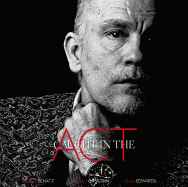
| Publisher: | Glitterati | |
| Genre: | Individual Photographers, Monographs, Subjects & Themes, Portraits, Photography | |
| ISBN: | 9780985169695 | |
| Pub Date: | October 2013 | |
| Price: | $65 |
| Art & Photography |
by Howard Schatz, Owen Edwards, Beverly J. Ornstein
In Caught in the Act, critically acclaimed photographer Howard Schatz explores what happens when an actor transforms ideas or words on a page to performance. Schatz set up one-on-one improvisations with 85 actors--including Pierce Brosnan, Geoffrey Rush, Jeff Daniels, Sissy Spacek, Mariska Hargitay, Hugh Laurie, John Malkovich, Michael Douglas, Colin Firth and Jane Lynch--through an amazing group of scenarios, creating powerful portraits of each subject, along with comprehensive interviews about the creative process.
Schatz's job was to inspire the actors, guiding them with suggested one-line scenarios; they responded in a spirit of play, forgetting the camera or the script. An idea for John Goodman: "It's Hallowe'en and you're greeting a bunch of little trick-or-treaters at the door in a way you figure they'll never forget." The resulting picture shows they won't. --Valerie Ryan, Cannon Beach Book Company, Ore.

| Publisher: | Insight Editions | |
| Genre: | Rock, Music, Genres & Styles | |
| ISBN: | 9781608872602 | |
| Pub Date: | August 2013 | |
| Price: | $45 |
| Art & Photography |
by Paolo Hewitt
David Bowie's career, much like his iconic personae, comes with its own oral tradition, its own apocrypha, like the ancient gods and monsters before him. The resurgence of Bowie-mania since the release of his 28th studio album, The Next Day, early this year, has spawned art exhibits and new critical theory on the subject of both man and myth.
Paolo Hewitt manages to synthesize the major movements of Bowie's music into one dramatic overture. With rare photos, comprehensive album stats and contextual narrative, Hewitt ties together a catalogue as disparate as Hunky Dory and Let's Dance. Bowie: Album by Album lends generous insight into the magic of a music legend's work, firmly establishing each album's historical significance--paramount for an artist whose work has striven to capture the present nuance. This is a glamorous addition to the serious fan's library. --Dave Wheeler, bookseller, The Elliott Bay Book Co., Seattle, Wash.
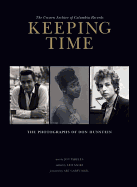
| Publisher: | Insight Editions | |
| Genre: | Celebrity, General, Music, Subjects & Themes, Individual Composer & Musician, Photography, Genres & Styles | |
| ISBN: | 9781608872244 | |
| Pub Date: | November 2013 | |
| Price: | $60 |
| Art & Photography |
by Don Hunstein, text by Jon Pareles, edited by Leo Sacks
Keeping Time is an elegant throwback to an era when photographers had permission to shoot their famous subjects instead of stalking them outside Starbucks. Don Hunstein was a staff photographer for Columbia Records for three decades, starting in the 1950s, and his assignments led to photographing some of the most illustrious names in music history--including Barbra Streisand, Miles Davis, Bob Dylan and Aretha Franklin.
Hunstein's black-and-white photos are relaxed, more candid than formal. Art Garfunkel, in his foreword, describes Hunstein's talent for putting his subjects at ease, and the pictures back up that claim. (A young Dylan actually smiles for the camera!) Hunstein's approach resembled that of a journalist more than a portraitist, capturing the artists in their element while staying out of their way. Keeping Time gives one a feeling of being a fly on the wall, watching legendary musicians in a variety of places and situations. --Elyse Dinh-McCrillis, writer/editor blogging at Pop Culture Nerd
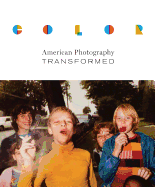
| Publisher: | University of Texas Press | |
| Genre: | Collections, Catalogs, Exhibitions, General, History, Techniques, Photography, Color | |
| ISBN: | 9780292753013 | |
| Pub Date: | September 2013 | |
| Price: | $75 |
| Art & Photography |
by John Rohrbach
From the first color photograph produced by a glass plate lined with dyed potato starch in 1851 to the rise of digital photography in the 21st century, color has had an intrinsic yet fraught relationship to photography, which John Rohrbach, the senior curator of photographs at the Amon Carter Museum in Fort Worth, Tex., outlines in Color: American Photography Transformed.
In the beginning, there was some question as to whether color photography was even art; Alfred Stieglitz, for example, considered it a pale imitation of reality. It was not until the mid-1970s and William Eggleston's pictures of everyday Southern life--combining a painterly knowledge of color with the spontaneous quality of a snapshot--that color photography finally earned respect. With 75 iconic works, lively, engaging text, and an appendix essay on the early challenges of developing color images, this book is a must for anyone with a deep interest in the evolution of both American and western photography. --Thuy Dinh, editor, Da Mau magazine